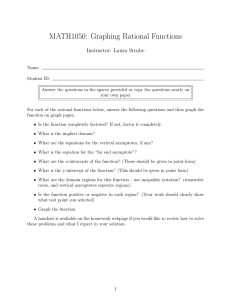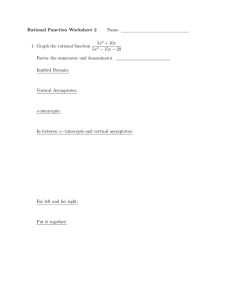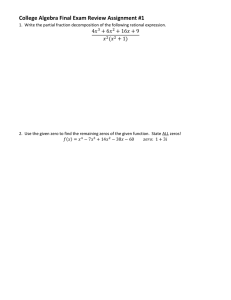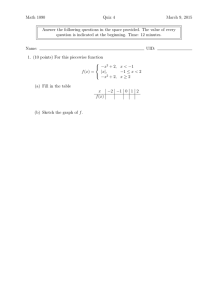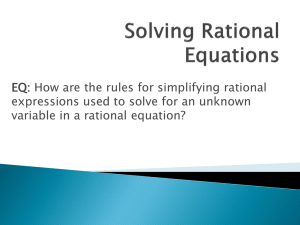2.5 – Rational Functions Introductions ≠ 0
advertisement
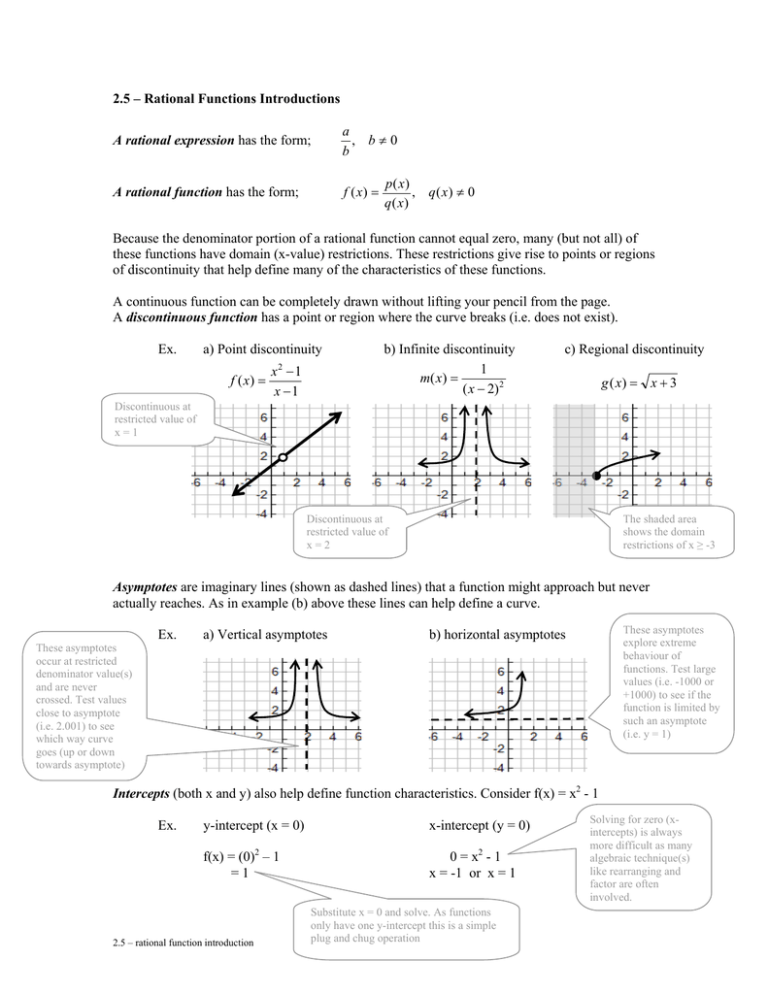
2.5 – Rational Functions Introductions A rational expression has the form; a , b≠0 b A rational function has the form; f ( x) = p( x) , q( x) ≠ 0 q ( x) Because the denominator portion of a rational function cannot equal zero, many (but not all) of these functions have domain (x-value) restrictions. These restrictions give rise to points or regions of discontinuity that help define many of the characteristics of these functions. A continuous function can be completely drawn without lifting your pencil from the page. A discontinuous function has a point or region where the curve breaks (i.e. does not exist). Ex. a) Point discontinuity f ( x) = 2 x −1 x −1 b) Infinite discontinuity 1 m( x ) = ( x − 2)2 c) Regional discontinuity g ( x) = x + 3 Discontinuous at restricted value of x=1 Discontinuous at restricted value of x=2 The shaded area shows the domain restrictions of x ≥ -3 Asymptotes are imaginary lines (shown as dashed lines) that a function might approach but never actually reaches. As in example (b) above these lines can help define a curve. These asymptotes occur at restricted denominator value(s) and are never crossed. Test values close to asymptote (i.e. 2.001) to see which way curve goes (up or down towards asymptote) Ex. a) Vertical asymptotes These asymptotes explore extreme behaviour of functions. Test large values (i.e. -1000 or +1000) to see if the function is limited by such an asymptote (i.e. y = 1) b) horizontal asymptotes Intercepts (both x and y) also help define function characteristics. Consider f(x) = x2 - 1 Ex. y-intercept (x = 0) x-intercept (y = 0) f(x) = (0)2 – 1 =1 0 = x2 - 1 x = -1 or x = 1 2.5 – rational function introduction Substitute x = 0 and solve. As functions only have one y-intercept this is a simple plug and chug operation Solving for zero (xintercepts) is always more difficult as many algebraic technique(s) like rearranging and factor are often involved. Although there are several different types of rational functions, we will be studying and transforming two main types. The simplest forms of these two functions are shown below. Ex. a) Reciprocal Linear Functions f ( x) = b) Reciprocal Quadratic Functions 1 x f ( x) = 1 x2 Use the graphing calculator to graph the following functions and complete the table to gain insight into some rational functions and their characteristics. You will need to copy the chart into your own notes so that you can fit in adequately sized graphs. Function Vertical asymptotes Sketch Horizontal Asymptotes Intercepts (discontinuity) (extreme behaviour) y x n/a y=0 ½ n/a 1 x−2 1 f ( x) = − 2 x 1 f ( x) = ( x − 2) 2 1 f ( x) = ( x + 2) 2 f ( x) = f ( x) = 1 ( x − 2) f ( x) = 1 2 ( x + 2) 2 1 0.5 0 -10 x x−2 x2 f ( x) = x − 2) f ( x) = f ( x) = x ( x + 2)( x − 1) 2.5 – rational function introduction -5 -0.5 0 5 10 2.5 - Sketching Practice Sheet 2.5 – rational function introduction
